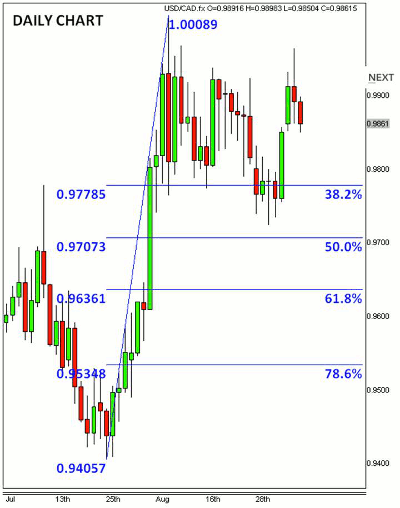Economic pressure and Canada’s increasingly dovish stance on interest rates means the US dollar could soon mount a sustained rally over its Canadian sister for the first time this year.
Given the amount of uncertainty in the global economy, no one expected the Bank of Canada (BoC) to raise interest rates. For the past year, the BoC has kept their target for their overnight rate at 1%, extending a freeze on rate hikes that started last October.
Two months is a long time to wait, and the world has changed quite a bit since the Bank of Canada last met in July. Stocks have fallen across the globe, and fiscal troubles on both sides of the Atlantic now pose a serious threat to growth that is already nonexistent.
The Canadian dollar fell sharply after the central bank acknowledged the deterioration in the global economic outlook and admitted that they miscalculated the severity of the slowdown in the US economy. As such, they now feel that "the need to withdraw monetary policy stimulus has diminished."
These are the magic words. Back in July, the BoC was still thinking about raising interest rates, and their hawkishness at the time surprised many investors.
However, signs of weaker growth in Canada and around the world has the market pricing in the possibility of a rate cut by the BoC before the end of the year. Although the central bank stopped short of saying they are open to lowering interest rates, the main takeaway from Wednesday’s meeting is that there will be no rate hikes until mid 2012 at the earliest.
The tone of this month’s BoC statement is also decidedly less optimistic. In July, concerns about the slowdown in US economy were offset by stronger growth in China and a post-earthquake recovery in Japan. The central bank believed that stronger growth in the second half of the year for Canada would warrant the need for the removal of stimulus.
However, now—given that the downside risks to their July outlook have materialized—exports could suffer while lower wealth and incomes could moderate the pace of investment and consumption growth. The BoC still believes that the economy will grow in the second half, but with consumers and businesses spending less, the pace of growth may not live up to their forecasts.
We won’t be surprised if the BoC ends up lowering their 2011 and 2012 growth forecasts. In July, they expected the economy to expand by 2.8% in 2011 and 2.6% in 2012.
More importantly, financial conditions in Canada could tighten further if global financial conditions deteriorate. In addition, even though the Canadian dollar has weakened since July, the BoC is not satisfied. They continue to believe that the strength of the CAD poses ongoing competitiveness challenges for exporters.
Here is a recent daily chart of the Canadian Dollar (aka Loonie) with Fibonacci lines drawn in:
With the Bank of Canada growing less hawkish, and interest rate hikes off the table, USD/CAD could make another run for parity with the US Dollar in the coming weeks, if not days.
Kathy Lien can be found at FX360.com.






















